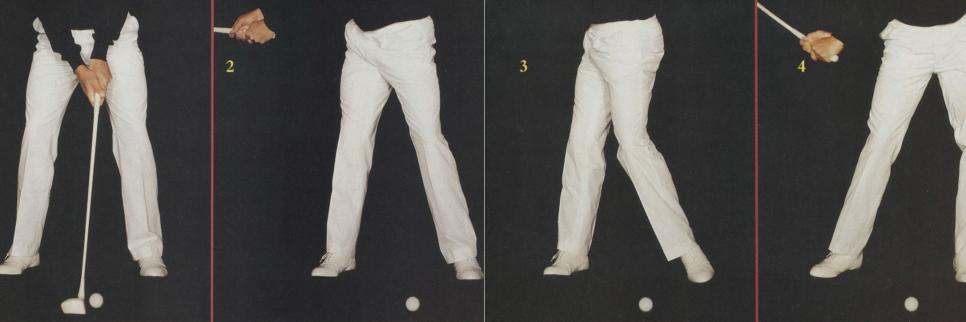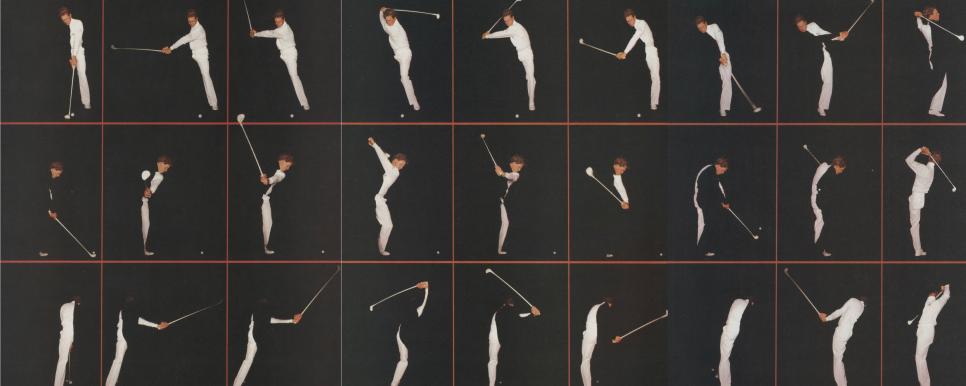At the risk of sounding too much like a company man, there really is so much cool stuff lurking around the Golf Digest Archive. I find myself wandering through it on a pretty routine basis, and every time I do, I find something more interesting than the last time I was there.
(If you don't believe me, you can be your own judge and check out the entire archive yourself).
Anyway, during my most recent sojourn into the past, I found myself marveling at this fascinating swing sequence of the legendary three-time major champ Payne Stewart. The sequence was the cover story for the May issue of Golf Digest in 1991, the year of Payne's second major win (you can read the issue here).
The images themselves are styled after a scene in the famed Bobby Jones "How I Play Golf" video series, where he used white clothing against a black backdrop to highlight key body segments.
And so, Golf Digest recreated the idea with Top 50 Teacher Chuck Cook to highlight some of Payne's "key moves to a classic swing."
Key move #1: No hip slide on the backswing

The first move that teacher Cook identifies in Payne's backswing is how little Payne's hips slide backwards on the backswing. This is an important point for the rest of us: Amateur golfers tend to slide their hips away from the target too much on the backswing, and too little on the downswing. Payne does the opposite. The white circles in the images above provide a reference point.
"There's little lateral movement in Payne's backswing, but there's a pronounced slide left on the downswing," Cook says. "Often, when I'm teaching higher handicappers, I get them to emulate Payne's impact position."
Key move #2: Extended (but not stiff) left arm

From the top of the backswing, the white sleeve on Payne's left arm highlights how his left arm stays extended away from his body, but never with a lot of tension.
"In the first frame, Payne's left arm is fully extended, which sets the width of his golf swing, but it's not stiff," Cook writes. "I'd suggest studying these photos of Payne while thinking of the swing as an old-fashioned wagon wheel. Payne's left arm represents the spokes."
Key move #3: Transition move

The final key move is perhaps the most important: A close look at how the lower body moves in transition. Nowadays, we call this move the "sequence." It's the one commonality that makes every good golf swing work, and Cook uses Payne's textbook lower body transition move to explain.
"The hips should turn on the backswing, shift to begin the downswing, then turn out of the way and clear after impact," he writes. "Here's another way to think about it: The upper body pulls the lower body on the backswing, and the lower body pulls the upper body on the downswing."
Some timeless lessons that still hold true. Again, you can read the article in its original form here, and check out the full black-and-white sequence below.


